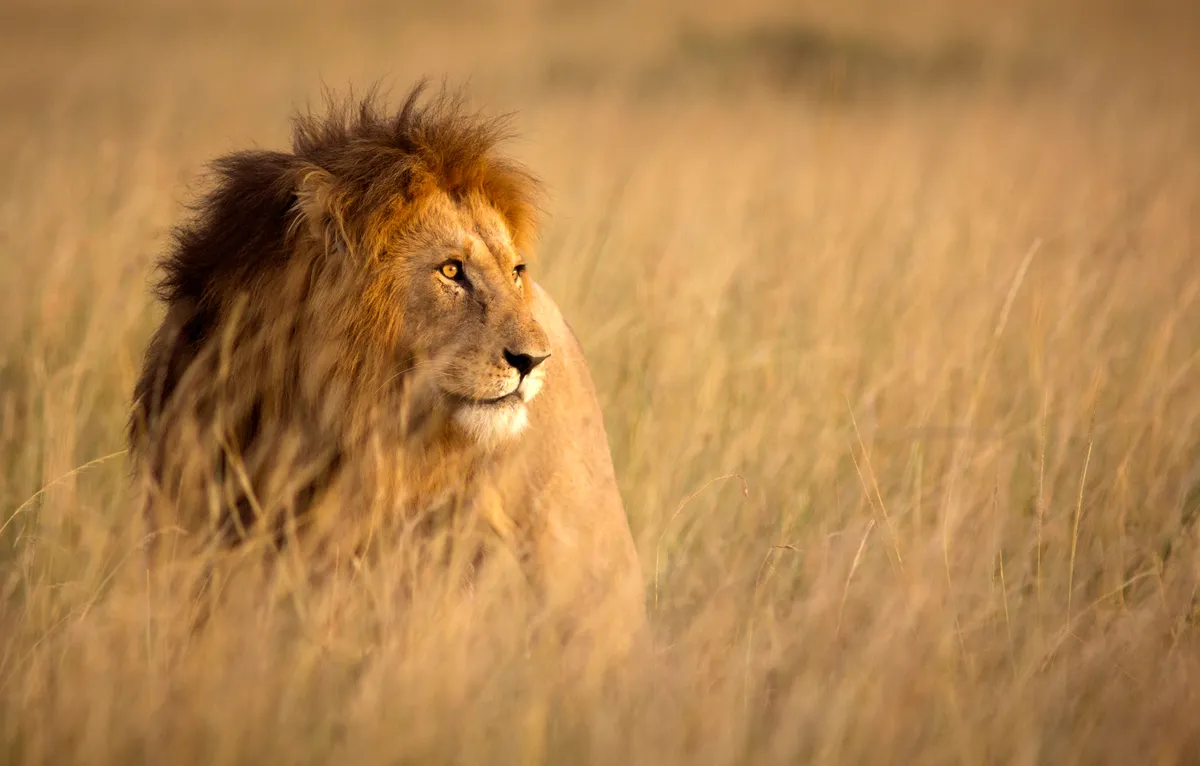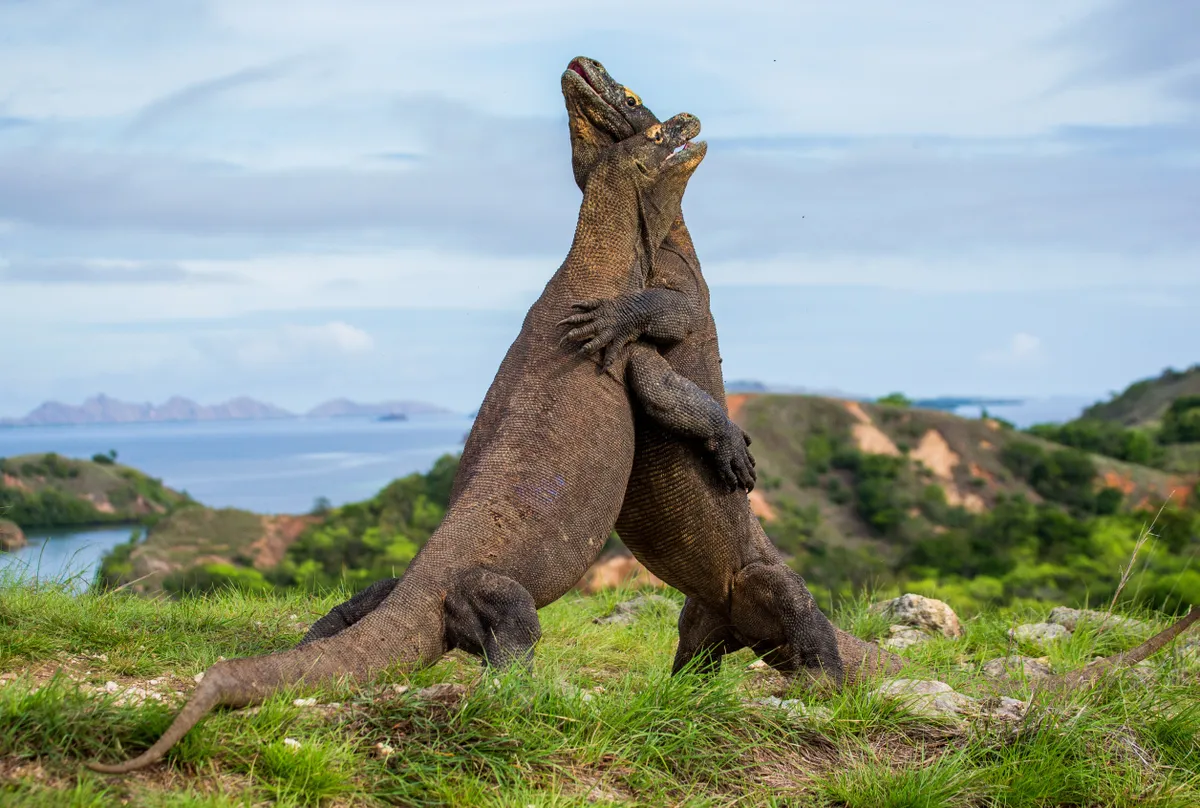Many of us aspire to visit countries with exotic and deadly wildlife, says James Fair. We want to go on safari to see big cats or swim with sharks without necessarily worrying about the risks involved.
Indeed for tourists, there really aren’t any, especially if we follow sensible protocols. It’s the smaller critters – the malaria mosquitoes and the tsetse flies – that pose the real perils, while for people who live in these environments day after day, protecting their livestock from large predators, can be a matter of life or death.
- The deadliest animals to humans – discover the world's most lethal creatures
- What's the deadliest animal in India? From snakes and scorpions to crocodiles and tigers there's plenty of deadly contenders - but the answer may surprise you
Deadliest countries for wildlife
Australia
The Land Down Under must be top of many people’s list of the most dangerous country for wildlife. Everything from great white sharks to box jellyfish, blue-ringed octopi and funnel web spiders seems out to get you. Taipans are said to be the most venomous snakes in the world.
Truth is, of course, our fears are overblown – from 2001 to 2017, there were 27 fatal shark attacks, and there are an estimated 1-2 snake bite deaths annually. But more people die from collisions with kangaroos, so it’s Skippy (and not Sharky) you really need to worry about.
Brazil
The land of the piranha, tarantula, the poison dart frog and the fer-de-lance snake is another country with a fearsome reputation. Add in the powerful constriction machine called the anaconda and the black caiman, and that’s a recipe for never leaving your hotel room.
But while all these animals are certainly capable of sending you to an early grave, they rarely do. If you really need to watch out for anything, then it’s the infamous bullet ant whose sting is said to leave you feeling as if you are burning alive – the Satere-Mawé people of the Brazilian Amazon even use bullet ants in initiation ceremonies.

Democratic Republic of the Congo
Responsible for an estimated 70,000 deaths a year, the malaria mosquito is the deadliest animal in the Democratic Republic of the Congo, but vipers and other snakes might come a close second. With a large rural population that relies on fishing and other forms of foraging to subsist, potentially fatal encounters are never far away. Figures suggest that up to 1,000 people die in the country every year from snake bites – if you’re bitten by a mamba, you can die within two hours if you don’t have access to a life-saving anti-venom.
India
While India also has a problem with dangerous snakes, with more than 60 venomous species including the spectacled cobra and the saw-scaled viper (and an estimated 50,000 deaths a year), there are two species that are barely mentioned when it comes to risk – the sloth bear and the Asian elephant. Sloth bears – so called because of their long, rakish claws – are regarded as the most bad-tempered of all the ursids, while 600 people die at the feet of elephants every year.
Burundi
Most people would probably struggle to put Burundi on a map, let alone imagine it as a place replete with deadly creatures. By and large, it isn’t, but it is reputedly home to one of the most dangerous individual crocodiles on the planet.
Nicknamed Gustave, this Nile crocodile is reported to be 9 metres long, weigh nearly a tonne and to have killed up to 300 people. One expert says it may have grown so large that it can no longer hunt its usual prey of antelopes and zebras, so has to attack larger animals – and people – instead.
Tanzania
Lions? They’re just big pussycats, right? Well, yes – and no. They’re no danger if you’re safely ensconced in a 4x4, but if you happen to live – as many Tanzanians do – in areas where they predate on your livestock, then it’s a different story. In 16 years, between 1990 and 2006, researchers found there had been almost 1,000 attacks on people in southern Tanzania alone, leading to 563 deaths and more than 300 injuries. It shows that lions provide a formidable threat to humans where we come into conflict.

USA
Humans apart, there are some large beasts that are worth avoiding down an alley on a dark night. According to official figures, brown bears killed 70 people over a 50-year period, while sharks were responsible for 57 deaths. But it all depends where you live – in East Coast Massachusetts, your chances of being killed by any animal are 1 in 8 million, but in the mid-west state of Montana, these come down to 1 in 700,000.
Mexico
The sinister sound of a rattlesnake shaking its rattle used to be a staple trope of western movies, but like most wildlife, these iconic desert reptiles want nothing to do with you in reality. Nevertheless in Mexico, envenomation by snakes is a problem – 4,000 bites are reported every year, resulting in an average of 34 deaths. Rattlesnake venom is alarmingly strong, but the good news is that these same venoms are being investigated as sources of wonder drugs against certain types of cancer, thrombosis and neuropathic pain.
Indonesia
A big cast of actors helps Indonesia into our top 10 – the Komodo dragon, the world’s largest lizard with a toxic bite that can fell a water buffalo is found in the south of the archipelago, while sea snakes, some of the deadliest serpents on the planet, patrol its waters and stonefish lurk unseen on the seabed. Monkeys such as macaques that are habituated to humans can give a nasty bite, while more than 100 deaths from rabies, mainly contracted from feral dogs bites, were reported in 2022.

Canada
There are many countries where collisions with wildlife are a problem, and Canada certainly has its fair share. Mule and other deer are the principal victims (with smaller numbers of moose, bears and coyotes), but an average of 20 people die every year too, though that’s nothing compared with the estimated 200,000 four-legged casualties. There are 4-8 large animal vehicle collisions every hour, and collisions peak in migration months of May and October and at night and dusk or dawn.
Discover more deadly animals
- What's the world's most dangerous mammal?
- Lethal lizards that can kill: Meet the world’s deadliest lizards
- These are the deadliest octopuses in the world – and one has enough venom to kill dozens of humans within minutes
- Meet the king cobra, one of the world's deadliest and much-feared snakes
Main image: Caiman and capybara crossing road sign in Pampas region of Rurrenabaque on the Beni river, Bolivia





